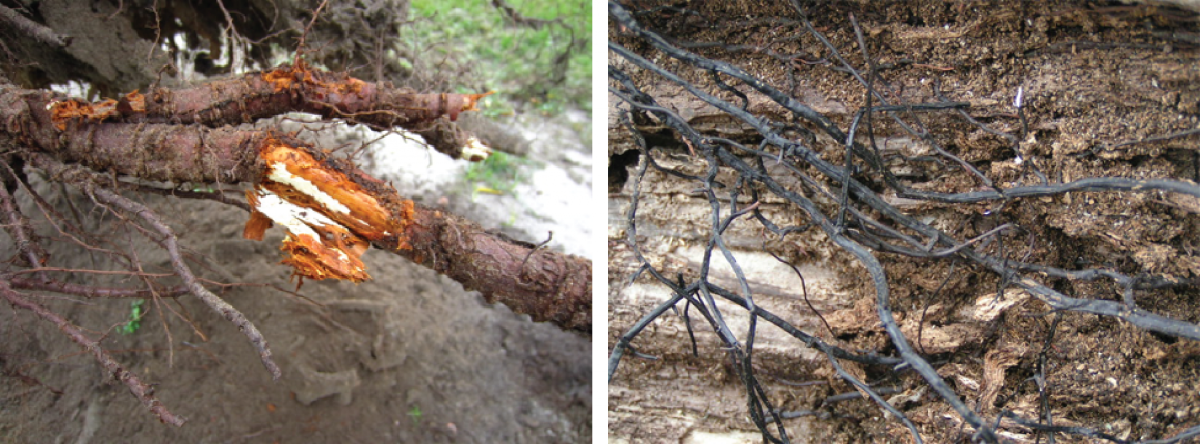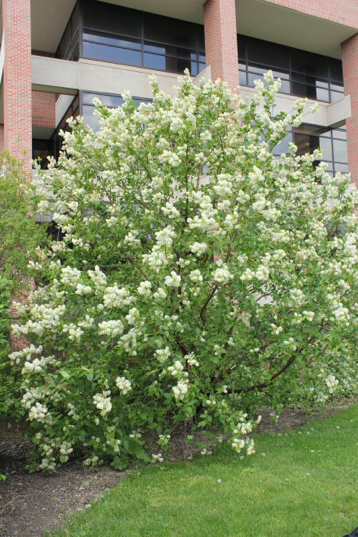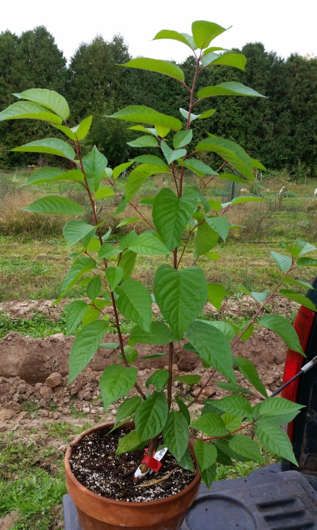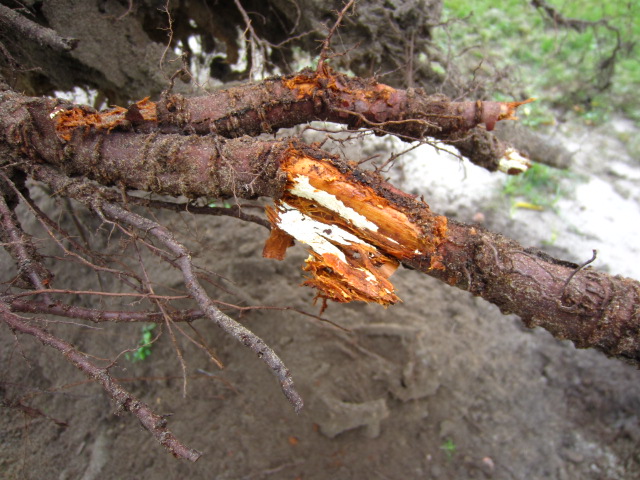Drew Wilson and Mercy Olmstead, Extension Team, Guido Schnabel, Pathology Team Member
Armillaria root rot wreaks havoc on rootstocks, killing young and old peach and cherry trees before spreading to neighboring trees. In the southeastern U.S., Armillaria root rot, caused by the fungus Armillaria tabescens, infects roots and destroys the lower trunk of the tree, turning wood material into a brown, pulpy mess interspersed with white fungal masses and causing tree death as the infection spreads and the wood loses structural integrity. Armillaria root rot caused more than $1.5 million in damage to the Georgia peach industry between 2000 and 2002, and between 1987 and 1992 the disease caused an estimated $3.86 million in annual damages in South Carolina (Schnabel, 2015).
This devastating disease can be caused by other Armillaria species as well. A. mellea is the primary pathogen in northern states, causing premature peach tree decline, with the potential for significant annual losses. In Michigan, the predominant fungus is A. ostoyoe, found in tart cherry orchards. Unfortunately, there is no “silver bullet” solution to protect trees, and Armillaria infections have taken many prime orchard sites out of production.
The first symptoms of an Armillaria infection are chlorotic leaves, stunted growth, and sudden collapse of shoots. A tell-tale sign of Armillaria infection is the presence of clusters of mushrooms around the base of an infected plant. Mushrooms sprouting from an A. mellea infection are honey-colored to dark brown and have a domed cap. Depending on species, the mushrooms may or may not have an annulus around the stalk or caps that are more disc-shaped.

(left) and rhizomorphs in peach root systems. Photo: M. Olmstead (L), G. Schnabel (R)
Infected plants can also be identified by cord-like structures called rhizomorphs (Figure 1) that grow on roots beneath the surface and between the wood and bark above ground. Some species produce rhizomorphs that can grow for many yards in the soil in search of prey: others only produce rhizomorphs initially to bridge the gap between a colonized dead root and a healthy root. Once trees are infected, they must be removed; however, the fungus can survive on roots left behind in the soil for many years to infect new trees after replanting. Unfortunately, the most effective way to combat Armillaria rot is to avoid planting on land where the fungus has been found, particularly if there were oak trees (Quercus sp. or Lithocarpus sp. syn Notholithocarpus sp.) present. If trees have been infected, the entire root system of diseased individuals would have to be removed from an orchard to reduce further spread of the fungus.

is mainly an ornamental plant due to its
distinctive bronze-colored bark.
Photo: A. Sebolt
Solutions on the horizon? For peach trees, at least one rootstock, ‘MP-29,’ is reported to have good Armillaria resistance (Beckman et al., 2012). For cherry trees, Prunus maackii, commonly known as Manchurian cherry, has also exhibited resistance to Armillaria (Figure 2). The peach breeding and cherry breeding programs at Clemson University and Michigan State University, respectively, are pursuing leads to develop Armillaria-resistant rootstocks (Figure 3). Obtaining DNA information to increase the efficiency of the development of these resistant rootstocks is a key objective of RosBREED.

MSU 2014. Photo: A. Iezzoni
References
Beckman, T.G., J.X. Chaparro, and W.B. Sherman. 2012. ‘MP-29’, a clonal interspecific hybrid rootstock for peach. HortScience 47:128-131. Cox, K.D., H. Scherm, and T.G. Beckman. 2004. Armillaria root and crown rot. Southeastern Peach Growers Handbook. http://www.ent.uga.edu/peach/peachhbk/fungal/armillariacr.pdf G. Schnabel, 2015. Armillaria root rot. http://www.clemson.edu/extension/horticulture/fruit_vegetable/peach/dise...

Photo: M. Olmstead
